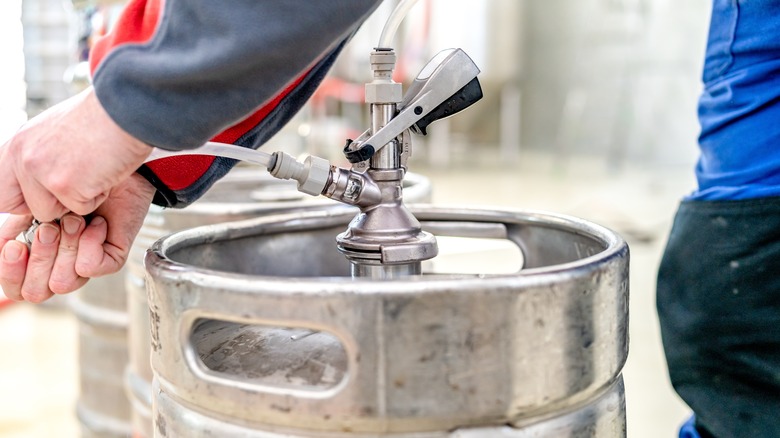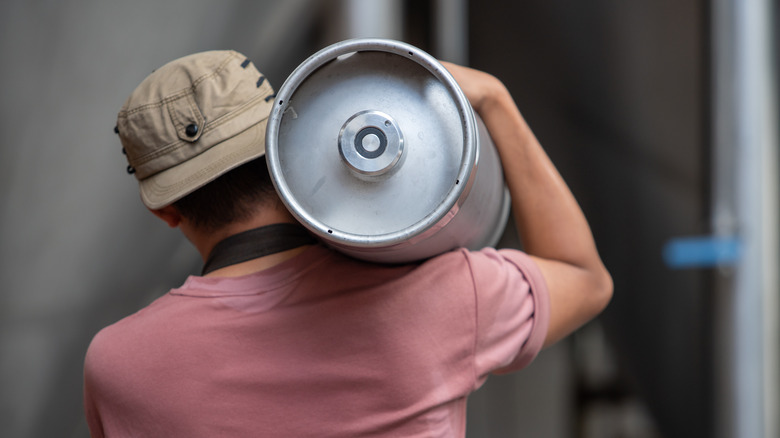How Long Does A Keg Last Once It's Been Tapped?
If you've got a keg of beer, it's safe to say you're serving a crowd. It's a wise investment for parties, as a keg can actually get you more beer per buck than bottles or cans. But even if you're hosting a large group, you're probably going to have some beer left over. Most kegs can hold between 40 and 124 pints of beer, which is certainly a lot to go through. A tapped keg won't match the shelf lives of bottled and canned beers, but on the other hand, it won't go flat as quickly as bottles and cans do once you open them. In fact, a single keg can last for months.
A keg can last you anywhere from a single day to around 17 weeks. That's a huge range, so let's narrow it down a bit with some specifics. The biggest factor affecting the shelf life of a keg is whether the beer has been pasteurized or not. Pasteurized beer has a significantly longer shelf life, generally keeping three to four months in a tapped keg. Non-pasteurized beer, on the other hand, will only last around two months tops — and sometimes as little as a week to 20 days. If you're looking to stretch the contents of your keg over the longest period possible, the first thing you should do is ensure you buy pasteurized beer. But that's not the only step you can take towards maximizing a keg's shelf life.
How to maximize the life of a keg
Aside from pasteurization, the biggest factor affecting the shelf life of a keg is the method you use to tap it. There are a few different devices you can use to accomplish this, the most simple and affordable of which is a manual pump, also known as a party pump. With this method, you pump air into the keg from the outside, forcing the beer out. Unfortunately, oxygen exposure is bad for beer and rapidly degrades its flavor. The outside air can also contain bacteria that might spoil the beer. Consequently, a keg tapped with a manual pump will only last a day. Instead, you should tap the keg using a CO2-based method like a jockey box or kegerator. These use a pressurized CO2 tank to dispense beer without allowing any air from the outside to get in the keg, keeping it fresh for months.
The last thing you need to consider to maximize a keg's life is temperature. Just like canned beer lasts longer in the fridge versus room temperature, a keg should be kept cold. The ideal temperature to store a keg at is 38 degrees Fahrenheit, although there is a little bit of wiggle room. Don't store the keg at anything more than 55 degrees Fahrenheit, because warmer temperatures could trigger bacterial growth in the beer. On the other end of the spectrum, don't let your beer go under 28 degrees Fahrenheit, or else it will freeze. Remember these keg facts to keep your precious suds in the best condition possible, and of course, drink responsibly.

